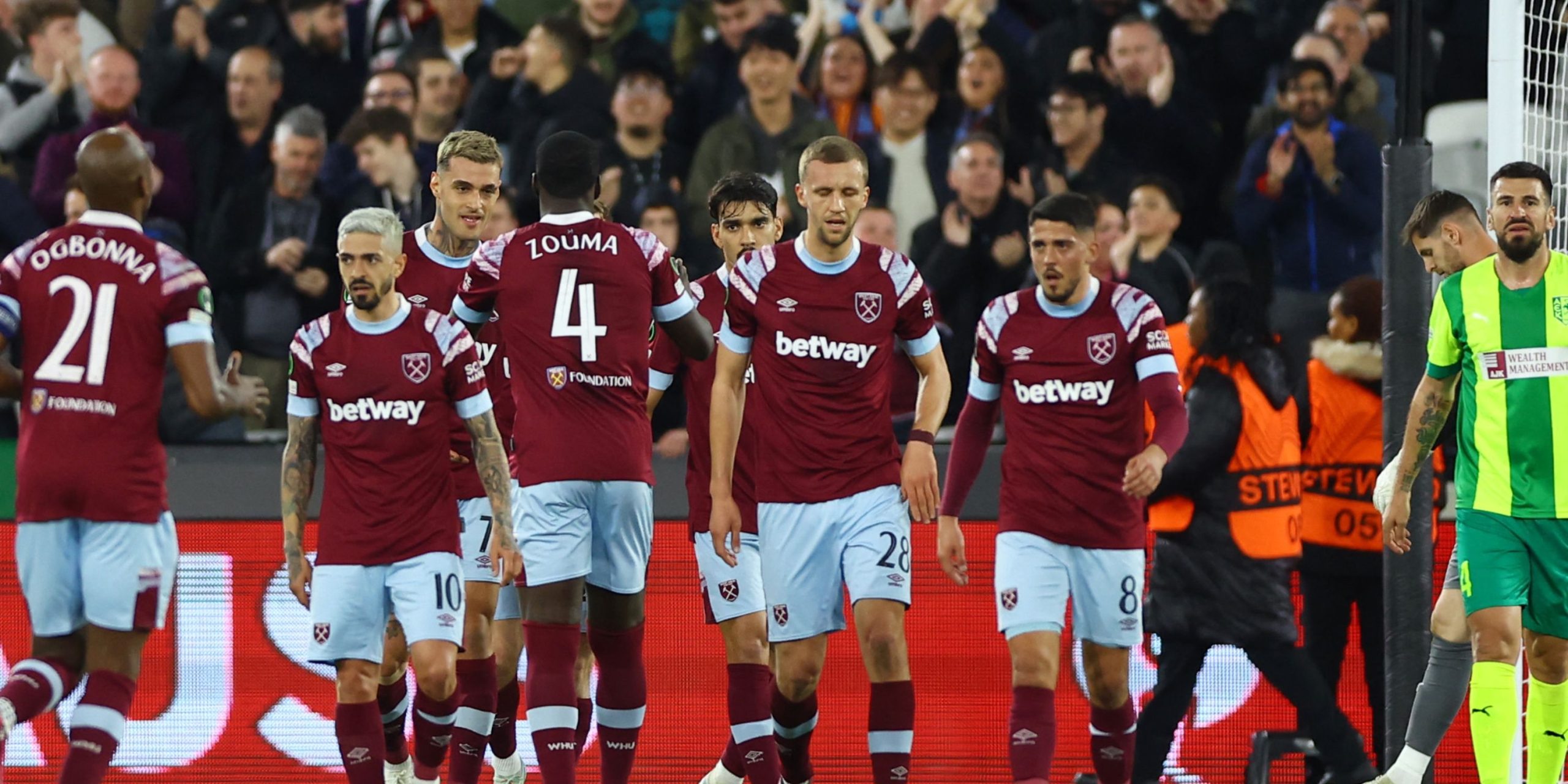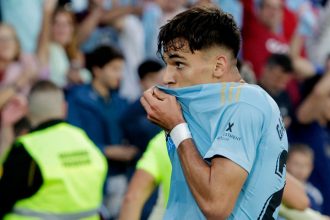West Ham United look to be on the route to brighter days under David Moyes, after their struggles during the 2022/23 Premier League campaign.
Last season, the Hammers flirted with relegation at times, however the lows of their league form were quickly forgotten thanks to their historic win of the Europa Conference League in May.
Moyes delivered the east Londoners their first European title since 1965, which seems to have subsequently inspired the squad to take the path to better days, as highlighted by their encouraging start to the 2023/24 season.
The Irons have recorded four wins from their opening eight games, only losing twice so far to portray their progression over the summer, assisted by the impressive business that was orchestrated in the transfer window.
From Mohammed Kudus to James Ward-Prowse, West Ham’s new arrivals have settled in swiftly to life at the London Stadium, however it wasn’t just the incomings that caught the headlines this summer.
Unfortunately for some, adapting to the Premier League and Moyes’ style of play didn’t come so effortlessly, as the Hammers prematurely bid farewell to one of their blockbuster signings of 2022.
When did West Ham sign Gianluca Scamacca?
In July 2022, West Ham announced the signing of Italian striker Gianluca Scamacca, arriving from Sassuolo on a five-year deal with the option to add a sixth year.
The Irons handed the Italy outfit a hefty fee of £35.5m for the 23-year-old, who had shown blistering form in his homeland that prompted Moyes to get a deal for the bright prospect over the line.
At the point of his arrival, Scamacca admitted his excitement to join the east Londoners, saying that he felt that West Ham was the “perfect team” for him to develop and impress at.
Why did West Ham sign Scamacca?
As quoted by Moyes, relayed by Sky Sports, the Irons had been “looking to add more strength” to their attack, which is where they found the services of Scamacca “well recommended”.
The 2021/22 campaign was a decisive factor in the Italian’s move to the Premier League, as he made his presence in Serie A known by scoring 16 goals in 36 appearances for Sassuolo, placing him at sixth in the scoring charts alongside company such as Lautaro Martinez and Dusan Vlahovic.
Scamacca's Serie A record (before joining West Ham)
Season
Apps
Goals
Assists
2020/21
26
8
2
2021/22
36
16
0
Figures via Transfermarkt
While that season was integral to him taking the career path he did by joining West Ham, the forward’s ability was highlighted in the year prior to his 16-goal streak, with talent scout Jacek Kulig dubbing him a “clinical finisher” at the age of 21.
In capturing him at 23 on a five-year deal, the Irons showed a statement of intent to unearth the full capabilities of the striker in the Premier League, however the ideas were far more bright than the action when it came to Scamacca’s development.
How much did Gianluca Scamacca earn at West Ham?
Not only did the forward make a positive career move by flying the nest and joining one of the most competitive leagues in the world, but he also catapulted his earnings by signing his contract at West Ham.
At Sassuolo, Scamacca was earning around £24k-per-week, a salary that amounted to £1.2m-per-year, not a bad wage packet for a 23-year-old to collect, but nothing on the figure he was presented with in east London.
The striker picked up a weekly wage of £90k at West Ham, earning £4.6m-per-year to make him one of the highest-paid players at the club, receiving the fifth-highest salary during the 2022/23 campaign.
Handing Scamacca such wage only reinforced how highly the Hammers valued their new acquisition, but when it came to showcasing how they valued him on the pitch, it was a different matter.
How many goals did Scamacca score for West Ham?
It took Scamacca nine match days in the Premier League to claim his first goal, however pressure was eased thanks to his stellar contributions in the Europa Conference League qualifiers, as he netted two in two.
It quickly became apparent that the Italian was not suited to Moyes’ style of play, with that being little fault of his own, as the move didn’t play out as perfect as he’d first anticipated.
From lack of game time to West Ham not playing their best football in general, it seemed to be a scenario of ‘right player, wrong time’ for Scamacca at the London Stadium, as he scored three Premier League goals in only 16 appearances.
The forward was only selected to start 11 games in the league campaign, as Moyes opted for a different approach which didn’t put the Italian in the picture, as he averaged just 58 minutes per game in the 2022/23 season, via Sofascore.
Matters were intensified in the summer, as favoured striker and West Ham veteran, Michail Antonio, spoke about Scamacca’s situation on the Filthy Fellas podcast, explaining simply that the forward was not the right man for Moyes’ set up.
After a total of 27 appearances across all competitions and eight goals, the Italian found an exit route from east London, signing for Atalanta for a fee of around £21.5m, highlighting just how poor of a deal the entire saga turned out to be for the Irons.
How much did Scamacca cost West Ham in total?
It could be questioned that if West Ham hadn't won the Europa Conference League, would Moyes have received more backlash for his handling of Scamacca both as a player and as a business transaction, as he was given little chance to show his worth.
The misfiring marksman was simply "disappointing" in truth, in the words of The Athletic's Roshane Thomas, as the exciting prospect of his five-year deal was abruptly ended after just 12 months, in a hugely expensive year for the Hammers’ financial department.
Despite not playing anywhere near as much as anticipated, Scamacca received his salary of £4.6m, which when added to his transfer fee, amounted to an eye-watering expenditure of roughly £40m to sign and maintain the striker.
To put things into perspective, West Ham were rinsed for around £5m per goal by the Italian, who did his best to impose himself in what was a hostile and negative time to be a new arrival into a fairly rigid system at the London Stadium.
While it was little fault of the 24-year-old’s own, the deal was an absolute disaster for both player and club, who at the point of his departure, had little to show for the millions lost along the way.








